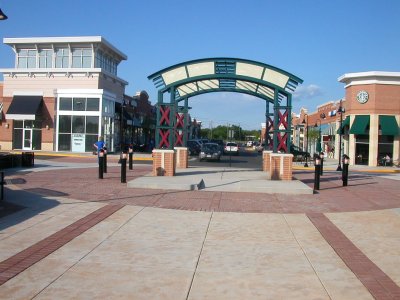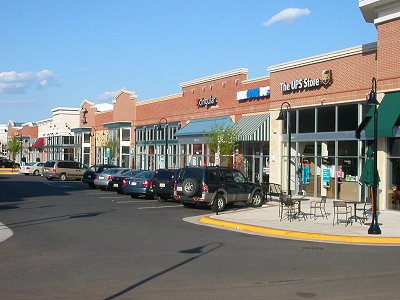How Will the Population and Housing Patterns of Northern Virginia Change?
|
In 30 years, Fairfax County transformed from a suburban bedroom community into a vibrant and diverse urban county of more than a million people, doubling in size and earning international respect as a major employment center and cultural destination in its own right. In 1970, less than four percent of our population was foreignborn; by 2004, fully one in four residents was born outside of the United States, bringing with them a diverse tapestry of cultural and economic resources. In 1970, 36 percent of county residents who worked outside of the home worked at job locations in Fairfax County.
Today, nearly 55 percent of us work in the county in which we live. Indeed, in 2004, the number of jobs and the number of employed residents in Fairfax County were nearly equal.
Thirty years ago Fairfax was an overwhelmingly white, Caucasian bedroom community to Washington D.C. Today we are almost 40 percent minority and our population draws from
over 100 countries across the globe. We are an enthusiastically diverse, urbanizing economic powerhouse for the entire region.
- Gerald E. Connolly, Chairman of the Fairfax County Board of Supervisors in "Foreword" to Anticipating the Future: A Discussion of Trends in Fairfax County (March 2006) |
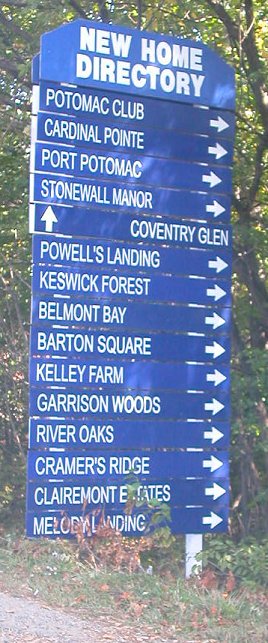 Some of us remember the Northern Virginia of 50 years ago, while the rest of us may have to rely upon textbooks and geography classes to get a sense of how it used to look - but we can all unpack our crystal ball and imagine the Northern Virginia region 50 years from now.
Some of us remember the Northern Virginia of 50 years ago, while the rest of us may have to rely upon textbooks and geography classes to get a sense of how it used to look - but we can all unpack our crystal ball and imagine the Northern Virginia region 50 years from now.
How will this place look in 2058?
The most basic assumption is that the population of Northern Virginia will grow. So long as the Federal government is centralized in Washington DC, and continues to expand, there will be a magnet drawing more people to Northern Virginia. So long as the wages paid to contractors to support the Department of Defense and other agencies exceed the national average, highly-skilled and highly-educated workers will migrate to this region.
More people means more housing, and fewer open fields and undisturbed forests. Arlington and most of Fairfax counties were "built out" between 1930-1990. Western Fairfax County has nearly completed that transition, and Centreville buildout will be complete when the land west of Route 28, between Bull Run and Dulles Airport, is developed in the next decade. Similarly, the Lorton (now renamed "Laurel Hills") area in southern Fairfax will be built out just as soon as the current housing market recovers.
If current trends continue over the next 50 years, you can assume Loudoun, Prince William, and Stafford counties will transform just as Fairfax County has suburbanized/urbanized in the last 50 years. If current trends continue over the next 50 years... but can you speculate on what might alter the trends? (Hint: see material on transportation funding.)
Demographic projections predict the population of Fairfax County will grow 20% by the year 2030, while Prince William County will grow 40% in the same time period. That differential in growth rates reflects the larger population of Fairfax. Adding 200,000 people to a base population of 1 million residents in Fairfax County will result in a 20% increase over the next 22 years.
Prince William will grow at twice the rate over the same time period, but is predicted to add only 170,000 people. The faster growth rate of Prince William (because the current population there is only 386,000) should not be confused with total population growth. More people will move to Fairfax than to Prince William, if the predictions of the demographers are correct.
As people continue to move into the inner suburbs, the few remaining undeveloped lots in Arlington and eastern Fairfax will be developed. "Infill" houses reflect modern tastes, so don't be surprised to see larger structures plopped next to smaller, post World War Two houses. Arlington Country reacted to the threat of out-of-character McMansions in 2005, passing the region's first ordinance controlling the size of new infill houses.
In 2050, unless trends change (or DC is destroyed by a nuclear weapon and ceases to serve as the center of Federal government), the cost of housing in the inner suburbs will continue to be higher than the costs of housing in the outer suburbs. As the areas close to DC have urbanized, vacant land has becomes scarce, and land prices in the inner suburbs (Arlington/Alexandria, then Fairfax) have climbed.
New housing built on vacant land ("greenfield" development) has become more expensive, as the cost of that land has climbed. To provide low cost housing, developers have moved further out on the periphery of the region, where there are more farms and forests to be converted into suburbia. Greater supply of land means a lower cost per acre, so developers can build lower-cost houses in the exterior suburbs or "exurbs" and still make a healthy profit.
 housing costs for Manassas Park: think they will still be lower-than-average for the entire state of Virginia in 2058?
housing costs for Manassas Park: think they will still be lower-than-average for the entire state of Virginia in 2058?
The increasing scarcity of vacant land inside the Beltway triggered the Fairfax County Department of Tax Administration to re-assess land values for existing properties in early 2008. The price per acre of the few remaining vacant lots in the county had climbed dramatically, so the assessor determined the value of the land underneath existing single-family dwellings was comparable to undeveloped land. The tax assessor then dramatically increased the value of the land underneath existing houses in the 2008 property tax assessments mailed to every homeowner. He also lowered the appraised value of the houses built on the land, to keep the overall total property values about the same.
Technically, the assessor got it right when he changed the ratio of the value of land to the value of buildings. Because comparable vacant land parcels had skyrocketed in value, but sales of developed lots showed the total value of properties with a single family residence already built on the parcel did not change significantly, the assessor was just reflecting the market when he raised the value of the land but dramatically reduced the value of the structures on the land.
Fairfax County residents unfamiliar with the arcane techniques for appraising property came unglued after opening the 2008 tax assessments. Property owners rejected the idea that their houses had dropped dramatically in value, especially when they considered their insurance policies for the value of the structure. After a public relations nightmare, the assessor agreed to revise his appraisal procedures.
Read:
However, the assessor was correct, if tone-deaf politically. Houses get old, and need more maintenance each year. Porches will be added, water heaters will be replaced, roofs will be re-shingled, and in many cases mortgages will be paid off over the next 50 years... but the structures will decline in value compared to the value of the underlying land. Most Northern Virginia residents will ultimately concur before 2058 that their existing structures are a "detriment" rather than an "improvement" to the land, and replacing the structures would be a wise decision. That's what commercial property owners on the Rosslyn-Ballston corridor decided after the new Orange Line made it cost-effective to redevelop their property - they tore down small structures and replaced them with tall towers, revitalizing the areas around each Metro station.
Because houses built particularly in the last 20 years were not constructed to be permanent, solid-for-many-centuries buildings, homeowners in Northern Virginia with "new" houses may be the first to decide that it is cheaper to tear down and replace their structures than to update/maintain them. The houses built since 1990 may be replaced before the houses built in 1950-1970. It's a counter-intuitive thought that new houses would wear out before old houses, but the quality of construction during the last two housing booms may have been substantially lower than earlier.
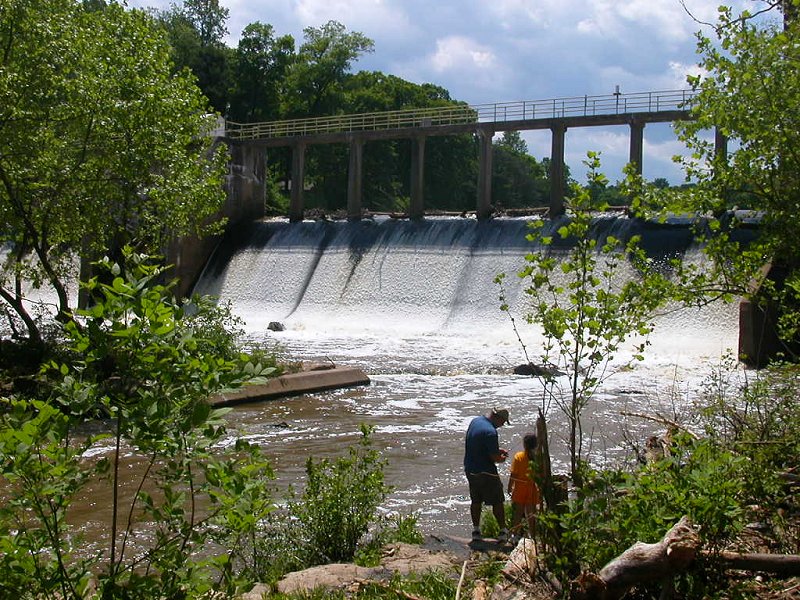 Lake Jackson Dam
Lake Jackson Dam
In some neighborhoods, this will not be a new process. The vacation cabins constructed in the 1930-1950's around Lake Jackson in Prince William County have already been through that cycle once. By 2058, the new houses built there in the 1970-1990's will be old enough to replace again.
As much of the housing stock in the inner suburbs is replaced, look for a shift in the housing business. Firms such as Toll Bothers, who are building 1,000 house subdivisions in Northern Virginia now, will not be able to acquire land zoned for new projects *if* current zoning districts are not altered (especially the AR1/AR2 districts in Loudoun County and AE districts in Prince William County). Large developers may be replaced by many small contractors, small companies or individuals without a listing on the stock exchange who remodel or rebuild just a few houses at a time.
One mantra of the environmental movement is to re-use rather than replace, so it is possible the existing houses will be retrofitted rather than torn down and replaced. Either way, the new houses will be significantly more energy efficient - and much of the construction debris will probably be recycled rather than hauled to a landfill. In addition, look for new houses to be designed to harvest rainwater that today is flushed directly to the stormwater drainage system. Cisterns will capture the rainwater, and homeowners will be able to use it to flush toilets or water gardens.
In a few cases, such as MetroWest next to Vienna Metro Station, large developers may manage to acquire large blocks of land and redevelop whole neighborhoods. Land acquisition in some cases could be smooth, with developers offering a significant premium over current value to entice homeowners to sell. More likely, there will be some cases with shenanigans involved as well. Just a few strategically-placed homeowners could block a big development, so don't be surprised if some redevelopers first acquire key properties secretly. (Hey, even the Nature Conservancy does it.)
- Some developers may even destabilize the neighborhood to encourage people to leave. "Blockbusting" based on racial prejudice is now illegal, but there are other creative techniques for stimulating flight until a redeveloper controls the acres necessary to justify the projected redevelopment. (Fairfax County supervisors were convicted of bribery in the 1960's during the initial surge of development. Should we assume everyone will be more moral as we experience redevelopment?)
- One form of destabilization is to take advantage of "stale zoning," where counties have designated higher-density development than what currently exists. Long-time neighborhoods filled with old single-family homes could see redevelopers tear down a single house straddling multiple lots, and build multiple houses that do not blend in with the current housing stock... until the neighborhood agrees to sell out. "Scrape-off development" is only possible if the underlying zoning is higher-density than current development, which is one way to define "stale zoning."
More commonly, look for local government agencies to encourage developers to build new "town centers" like Reston or MetroWest, through rezonings and commitments to build new Metro, VRE, or Bus Rapid Transit stations. Plans for multi-use town centers mix residential, commercial, and office uses together, rather than segregating separate uses into separate places - which requires more roads or transit services to move people around. In addition, town centers designed by smart growth planned include public spaces for recreation, so residents are not isolated in private spaces and lack a sense of community (as occurs in many suburbs).
The first town center in Northern Virginia was Alexandria. In the last 40 years, Tysons Corner grew into the classic Edge City, a cluster of office and retail space, at the intersection of Route 123, Route 7, and the Beltway (I-495). Development is concentrated on 1,700 acres (just one-third the size of Manassas National Battlefield Park). Tysons rivals the downtown area of DC as an employment center for Northern Virginia commuters, and serves as the "economic engine" of the state of Virginia. It's a job center that inflates with 100,000 workers each day, then shrinks to 17,000 residents at night.
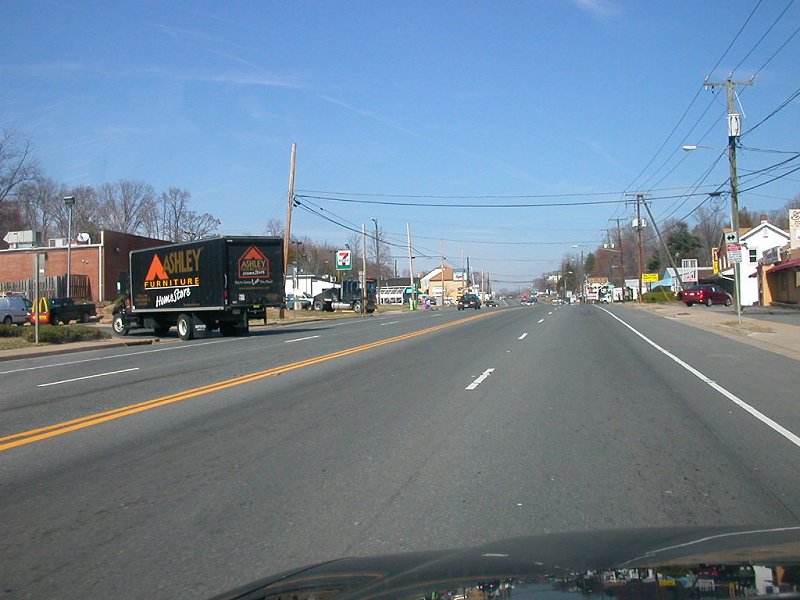 pedestrian-hostile Route 1 just north of Quantico
pedestrian-hostile Route 1 just north of Quantico
(Tyson's Corner is not the only place where redevelopment could create a "walkable community")
Tysons is also notoriously hostile to pedestrians. Roads were built so wide that people get in their cars and drive across the street, rather than try to cross on foot. Traffic jams are constant, without a grid system of streets to allow drivers to escape gridlock by talking an alternate road. The redevelopment plans for Tysons include inserting more overnight residents (in part through construction of hotels). Redevelopment also includes adding Metro stations to reduce at least some of the traffic, though much of the Metro use would be passengers going to/from Dulles/Reston. Rezoning parcels of land to permit expansion of stores/offices/residences, could generate more car/truck traffic than Metro would eliminate.
Read:
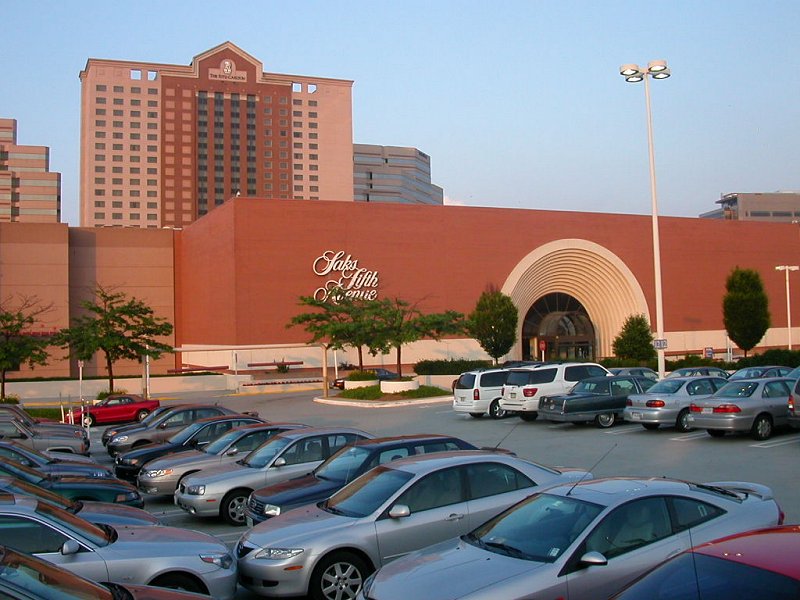 Tysons, a car-centered place
Tysons, a car-centered place
It's not clear that Tysons or Reston are the model for future town centers in Northern Virginia. There is no requirement for clusters in the suburbs to develop to urban density, or for Gaineville to develop as an edge city equivalent to Tysons. County officials, through zoning and transportation decisions, could apply "carrots" (such as transit services, like Metro stations) and "sticks" (such as restrictive zoning) to shape development, but that requires both planning and political will. If elected officials always bend over backwards to help all landowners develop as they desire, then growth will be shaped by the desires of landowners rather than by the Comprehensive Plan of the counties.
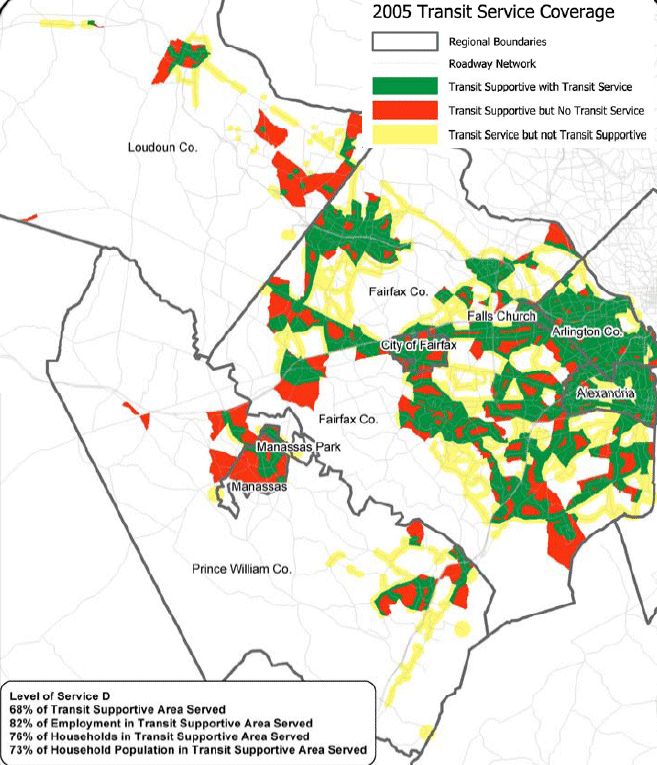 areas served by transit - note low service levels in low-density areas in periphery counties
(Since costs to provide transit everywhere is prohibitive, what areas would you "leave out" of the transit plan in 2058?)
areas served by transit - note low service levels in low-density areas in periphery counties
(Since costs to provide transit everywhere is prohibitive, what areas would you "leave out" of the transit plan in 2058?)
Source: Northern Virginia Transportation Authority - TransAction 2030 (p.16)
Fragmented efforts to stimulate new town centers in a wide number of areas could result in scattered sprawl and "edgeless cities," with no clear edge between developed and undeveloped land. Robert E. Lang, of the Metropolitan Institute at Virginia Tech, has suggested that "Edge Cities are perhaps the last stop on the road away from traditional urban forms." He determined that most office space outside of the Central Business District of downtown cities is not clustered in Edge Cities, but sprawled across suburbia in a pattern that maximizes use of the automobile.
As he notes, "Office location also impacts urban sprawl. If most new office space is constructed at the regional edge, it extends commuter sheds for many miles into undeveloped rural areas and
thereby fuels sprawl. Finally, the geography of office location figures prominently in transportation analysis. If most new space is built in areas with no public transit access, then reliance on automobiles will continue to grow."1
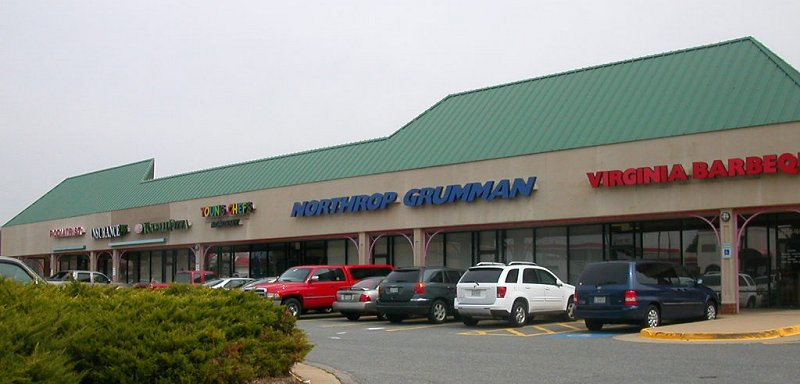 office of Quantico Marine Corps Base contractor, Northrup Grumman, in Stafford County shopping center
office of Quantico Marine Corps Base contractor, Northrup Grumman, in Stafford County shopping center
Look for local governments to target existing shopping centers (such as Fair Oaks Mall, Manassas Mall, or Potomac Mills) for redevelopment. Ballston Common is alway morphing into a mixed use facility rather than a shopping-only location; it even includes a training center for the Washington Capitals hockey team. Do you really expect the shopping center south of GMU's Fairfax campus on the other side of Braddock Road, to always stay a shopping center?
 University Mall - a permanent feature, or subject to revitalization into a mixed use area?
University Mall - a permanent feature, or subject to revitalization into a mixed use area?
(where all customers would not have to walk or drive across a 4-lane Braddock Road)
The biggest of the big opportunities could be triggered by another aircraft hijacking. If the perception of the terrorist threat grew high enough, the Federal government could shut down Reagan Washington National Airport, eliminating commercial jet travel within just seconds of the White House, Capitol, Pentagon, and other high-value targets. The airport might be left open for military flights - but one possible tenant to occupy the site is the headquarters of the Department of Homeland Security.
In the short run, look for local governments to change existing zoning codes that require parcels be developed for exclusively residential, retail, or office uses. Look for local governments to encourage offices to be mixed in with retail stores in commercial shopping districts. During smart growth redevelopment, vast empty parking lots will be replaced by parking garages, and multi-story residential buildings will be constructed within easy walking distance of the shopping district. Look for those multi-story buildings to be mixed use buildings, with retail stores on the ground floor and offices/hotels on the next few floors.
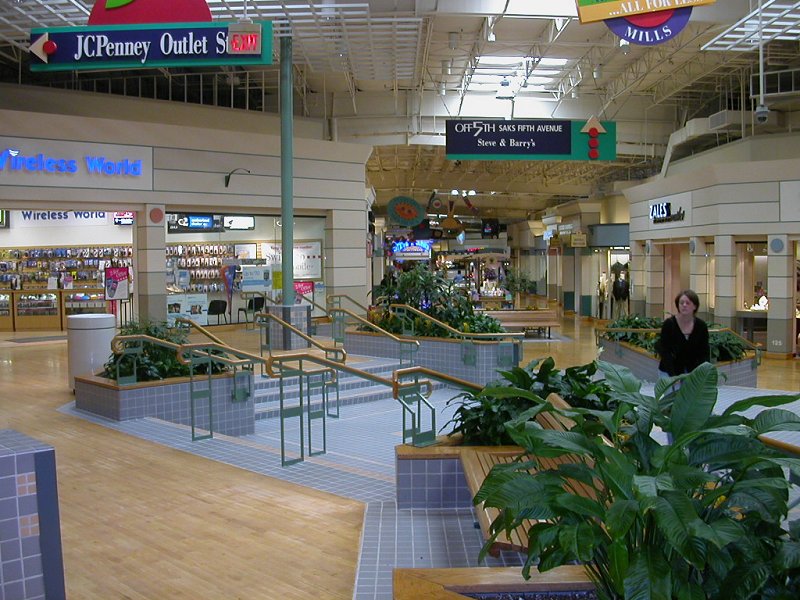 Potomac Mills - a classic opportunity to convert single-use area
Potomac Mills - a classic opportunity to convert single-use area
into a multiple-use town center |  Ikea - a destination shopping place that is
Ikea - a destination shopping place that is
inaccessible except by car |
The most significant clue that local governments are getting serious about smart growth will be the day that new buildings, even residential buildings, are required to have sprinkler systems. Fire chiefs are adamant that new housing developments must have wide streets, in order to allow easy access by fire trucks in case of emergency. There's no way to build a town center is the streets must be 110 feet wide, with even larger turn-arounds at cul de sacs. However, sprinklers reduce the threat of fire so greatly that fire professionals would drop their objections to narrow streets, close-together buildings, and "traditional neighborhood development."
Look for smart growth principles to be applied, in fits and starts. In the short run, every politician claims they can fix the transportation problem, and almost every time the solution is "we need more money for more roads/more transit." Maybe the Federal government will increase funding for Northern Virginia in the next transportation bill (due to be passed in 2009, if the Congress maintains its six-year funding cycle). Maybe the Virginia General Assembly will raise taxes/fees in special session in May, 2008.
However, the amount of funding proposed for the Northern Virginia Transportation Authority (and blocked by a court decision) was only half of what was needed to implement the proposals in the TransAction 2030 plan. Arlington and Fairfax do not expect to receive substantial Federal funding for the proposed Columbia Pike trolley, and Federal funding for the extension of Metro to Dulles could be the last major infusion for our region for years to come. There may be no new new bridges across the Potomac River, comparable to the Woodrow Wilson Bridge at Alexandria.
If local governments must use local taxes to fund new roads/transit, look for local solutions to meet requirements of the voters in that juriusdiction. Look for local bond issues to create feeder bus systems to increase access to commuter parking lots where bus service provides access to jiob centers such as Tysons Corner and DC. Look for local funds to be directed towards creating "circulator" bus service between Gainesville and Manassas, or on Route 1 between Quantico and Fort Belvoir. It's not likely that local taxpayers would be as interested in funding regional solutions that b enefit non-local users, such as extending Route 234 north to connect with Loudoun County Parkway and facilitate truck access to Dulles airport.
Unless you really can fool all of the people all of the time, pretty soon Northern Virginia politicians will have to propose realistic options for funding transportation improvements. The candidates will have to quit making unrealistic claims (such as "I will get Metro extended to Potomac Mills..."), and the officials who actually get elected will be far more focused on shaping the pattern of growth to reduce the future costs of transportation. The visionary smart growth planners will wake up one day and realize they have won the argument, everyone agrees that jobs need to be located near houses... but it's still very difficult to implement that philosophy.
The cost of providing services to a widely-scattered population is more expensive than servicing high-density populations, but most private property owners will need to be incentivized to redevelop. Shopping centers with parking lots may be low-hanging fruit for redevelopment, but few owners of shopping centers are in the business of building town centers - yet.
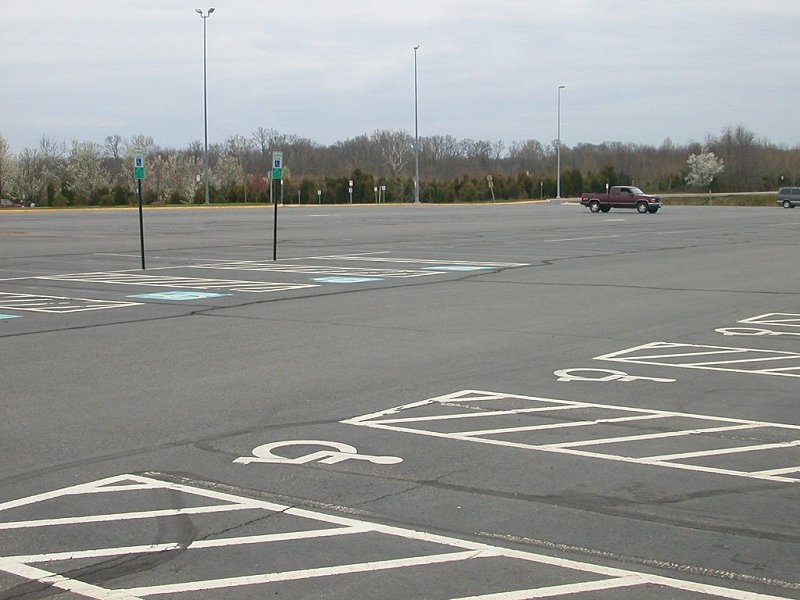 parking lot at end of VRE line south of Manassas - suitable for redevelopment?
parking lot at end of VRE line south of Manassas - suitable for redevelopment?
If local governments determine that new town centers are not sufficient to meet the increasing population growth, look for local governments to buy land and combine with private sector partners to rehabilitate or revitalize areas. Existing government-owned property, including commuter parking lots, are candidates for making space available to developers interested in constructing new town centers.
Don't expect the town centers to have distinctive architecture. Fairfax Town Center is one example of how such development lacks uniqueness, and may appear artificial. "Centers" championed by the government will be built according to a standard plan, and served by franchise stores. The town centers will not be created organically by people choosing to coalesce together over time, but such developments can be established quickly - and be economically viable. Fredericksburg's downtown is filled with unique stores and restaurants, offering dramatically different shopping and entertainment options compared to the "instant" town centers.
Locating density (i. e., concentrating housing and jobs in multi-story buildings) next to transit will still generate controversy. The neighbors may be other towers, but the addition of more people could still over-crowd a town center. A proposal to build a 16-story tower over the Bethesda, Maryland Metro station has drawn objections from owners of similar towers near the site. The complaints are familiar - too many more people living/working in the new tower will overwhelm the existing capacity of the neighborhood. (The new tower agreed to provide no parking spaces, thus - in theory - creating a place where no one has a car and drives on local roads.)2
Virginia Gateway in Gainesville - artificial traditional main street, filled with franchises
At the moment, land acquisitions by cities/counties for redeveloping a place into a town center could occur only from willing sellers. The US Supreme Court has upheld (in Kelo v. New London) the authority of local governments to condemn private property in order to sell to other private property owners who will redevelop it, even if the existing property was not "blighted" in any way. However, the Virginia General Assembly constrained local governments in 2007.
The state legislature required that eminent domain could be used only for traditional "public purpose" acquisitions for roads, schools, parks, etc. However, that legislative limit could be removed by a future General Assembly, just as the Coleman decision restricting expansion of I-66 inside the Beltway was eliminated 20 years later by the US Congress.
In the course of the next 50 years, predictions of the death of McMansions could come true. A century ago, when wealthy families moved from old Victorian homes in urban centers to estates on the fringe of development, those old mansions were re-purposed as multiple-family apartments. If gas hits $10/gallon and the wealthy owners of current McMansions move to town centers, who will buy and live on those 10-acre lots?
With the addition of more bathrooms and kitchens, multiple families could share the space and the cost. Backyards could be converted from turf grass into gardens, with chicken coops nearby. The neighborhoods where large, high-priced houses are scattered across the landscape, with acres of empty "horse pasture" land between the structures, may not be the slums of the future - but McMansions in the country may loose popularity so quickly that their value crashes, if the cost of commuting continues to climb rapidly.
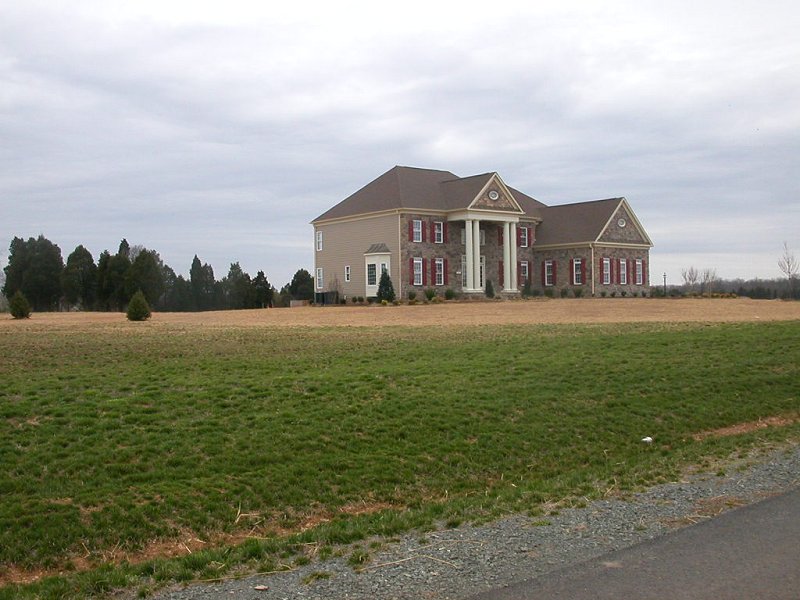 part of a subdivision of isolated McMansions on 10-acre lots near Bristow
part of a subdivision of isolated McMansions on 10-acre lots near Bristow
References
1. Robert E. Lang,, excerpt from Edgeless Cities: Exploring the Elusive Metropolis, p.9, http://www.mi.vt.edu/data/files/external%20publications/pel%20regional%20review%20edgeless.pdf (last checked April 29, 2008)
2. "Bethesda Zoning Dispute is Case of Goliath vs., Well, Goliath," Washington Post, April 29, 2008 http://www.washingtonpost.com/wp-dyn/content/article/2008/04/28/AR2008042802590.html (last checked April 29, 2008)
Future of NOVA
Northern Virginia
Virginia Places
 Some of us remember the Northern Virginia of 50 years ago, while the rest of us may have to rely upon textbooks and geography classes to get a sense of how it used to look - but we can all unpack our crystal ball and imagine the Northern Virginia region 50 years from now.
Some of us remember the Northern Virginia of 50 years ago, while the rest of us may have to rely upon textbooks and geography classes to get a sense of how it used to look - but we can all unpack our crystal ball and imagine the Northern Virginia region 50 years from now.









